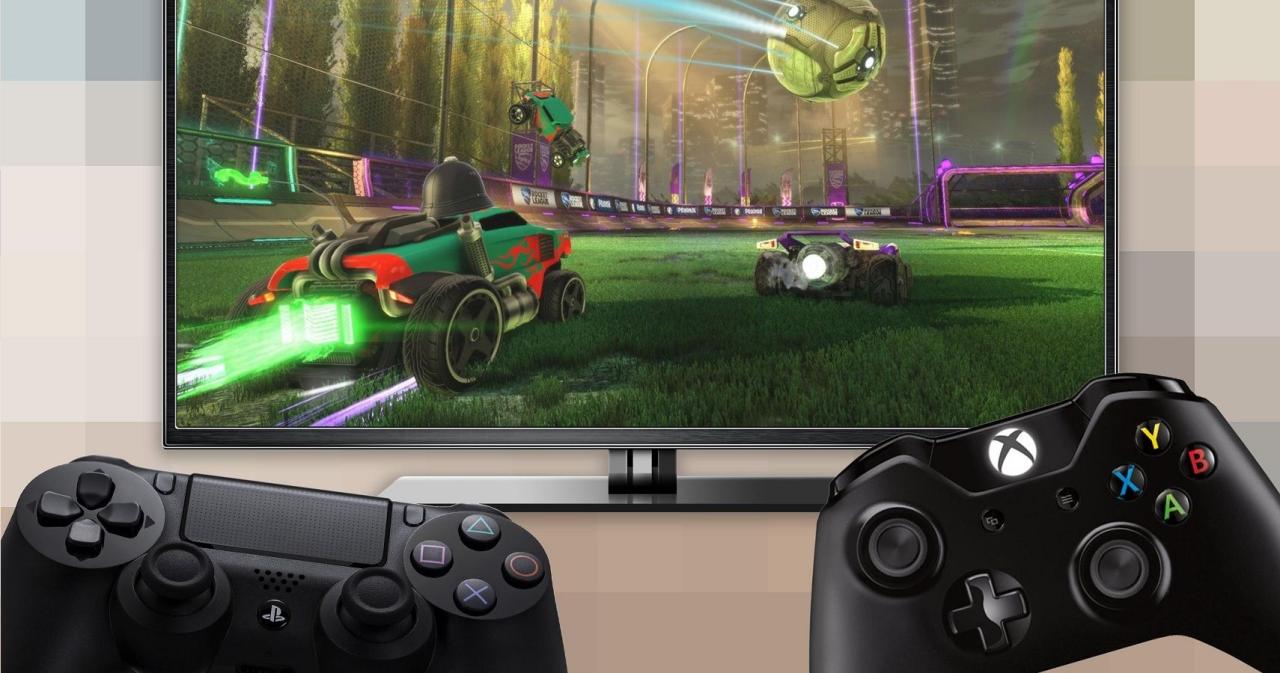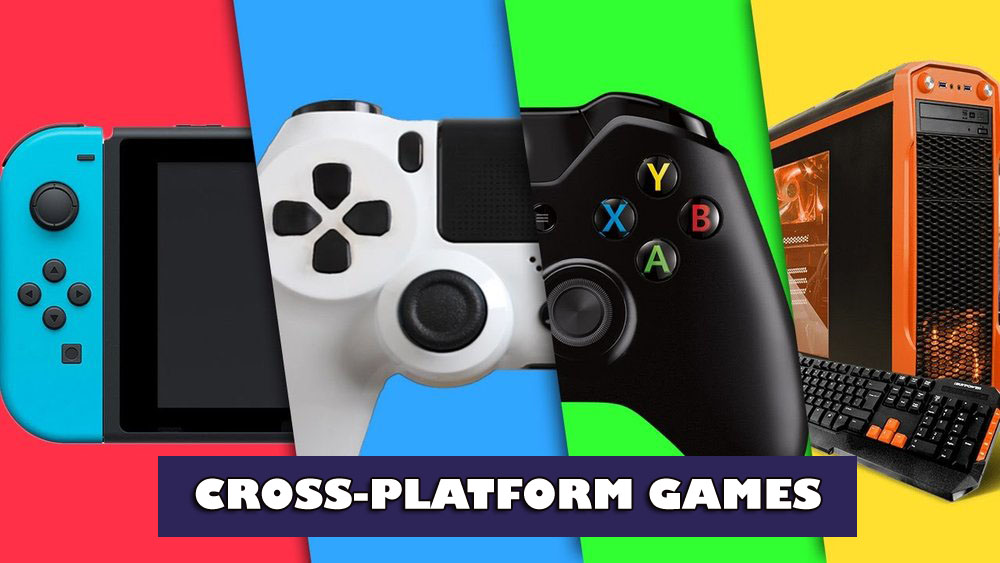The history of video games is deeply rooted in the separation of players, dictated by the hardware they owned, creating distinct ecosystems where Xbox players couldn’t join friends on PlayStation, and PC gamers existed in their own world.
This long-standing technological and commercial division has consistently limited social interaction, fractured player communities, and often hampered the long-term health of multiplayer titles.
For decades, the notion of seamless interaction between users on different consoles, personal computers, and mobile devices seemed like an unattainable ideal, blocked by competing business models, proprietary network infrastructures, and a general reluctance from major platform holders to share their lucrative user bases.
However, a seismic shift has occurred, driven by changes in technology, consumer demand, and a necessary evolution in industry philosophy.
The adoption of unified backend services, cloud technology, and shared development standards has finally paved the way for widespread cross-platform play, or “cross-play.”
This is more than just a technical feature; it is a fundamental reorientation of the gaming world toward a unified social space where the hardware is merely a doorway, not a barrier, allowing massive, diverse communities to converge within the same digital arenas, a movement that is now irreversibly defining the future of gaming.
The Technical Backbone of Cross-Play Connectivity

Achieving true cross-platform functionality requires overcoming significant technical hurdles and implementing sophisticated, unified infrastructure.
A. Unified Account Systems
The foundation of cross-play is a unified account system that allows a player’s identity, progress, and purchases to be recognized across every device. This is accomplished by linking a user’s platform-specific identity (like a PlayStation Network ID) to a central, game-specific master account (like an Epic Games account).
B. Standardized Network Protocols
Games must rely on standardized network protocols and APIs that ensure data packets and communications flow smoothly and uniformly across different hardware architectures. These standardized protocols ignore the unique networking layer of the host console.
C. Cloud-Based Synchronization
All player data, including character levels, inventories, and save files, must be stored on a cloud-based server rather than locally on the device. This ensures that a player switching from a PC to a console sees the exact same progress instantly.
D. Input Standardization and Matching
The system must manage the inherent disparities between input methods, such as a mouse and keyboard (MKB) versus a controller. This is often solved with sophisticated matchmaking filters that prioritize matching like-input players, or by applying sensitivity caps to controllers.
E. Unified Voice and Text Chat
Cross-play demands a unified voice and text chat infrastructure that works seamlessly, regardless of the user’s base platform. This ensures social cohesion and necessary in-game communication.
F. Handling Varied Frame Rates and Latency
Developers must build games capable of tolerating and compensating for the varied frame rates and latency of different platforms, ensuring the gameplay experience remains fair and responsive for everyone.
Business Dynamics and Platform Cooperation
The shift to cross-play was largely enabled by a change in philosophy among the biggest industry players, moving from proprietary lock-in to open access.
A. The Influence of Consumer Demand
The increasing demand from consumers to play with friends, regardless of hardware, became too loud for platform holders to ignore. This demand forced an industry-wide policy change.
B. Microsoft’s Early Embracing
Microsoft was a key early adopter, actively promoting cross-play between Xbox and PC, and pushing for wider cross-network play. This set a crucial precedent for the industry.
C. Sony’s Phased Approach
Sony initially resisted but eventually relented to public pressure and economic reality, cautiously allowing cross-play for major titles. The decision to open up its network was a watershed moment.
D. The Competitive Edge of Unified Player Pools
Games that support cross-play benefit from much larger player pools, leading to faster matchmaking times and a healthier competitive environment. This is a massive competitive advantage.
E. Fostering Long-Term Game Longevity
A large, consolidated player base means a game’s online lifespan is significantly extended, which increases its long-term revenue potential for developers and publishers. This longevity makes cross-play an essential feature for live-service games.
F. Mitigating Market Fragmentation Risk
For developers launching a new multiplayer game, cross-play mitigates the risk of market fragmentation, ensuring the player base doesn’t split and die off across five different isolated platforms. Cross-play guarantees a critical mass of players from day one.
The Cross-Progression Revolution

Beyond simply playing together, cross-progression is the vital feature that allows a player’s investment of time and money to follow them everywhere.
A. Account Continuity Across Devices
Cross-progression ensures that a player’s single account tracks their progress, including experience points, statistics, and rank, no matter which console or device they log in from. This means players never have to start over.
B. Universal Inventory and Cosmetic Ownership
All purchased or earned virtual inventory, such as cosmetic skins, emotes, and battle passes, is instantly accessible on every platform. This makes the player’s investment in digital items universally valid.
C. Seamless Platform Switching
A player can start a game session on a console and finish it on a mobile device without losing a single second of progress. This is invaluable for modern, multi-device lifestyles.
D. Driving Digital Purchase Value
By ensuring that in-game purchases are not locked to a single piece of hardware, cross-progression significantly increases the perceived value of digital items. Players are more likely to spend money knowing the items are portable.
E. Unlocking Multi-Screen Experiences
This system enables innovative multi-screen experiences, such as using a mobile device for inventory management or maps while the core game runs on a PC or console. Cross-progression enables secondary device utility.
F. Reducing Friction for Hardware Upgrades
When a player upgrades from an older console generation to a new one, cross-progression removes all friction, guaranteeing the transition is seamless with all progress intact. This benefits both the consumer and the platform holder by encouraging upgrades.
Key Challenges and Ongoing Disparities
While cross-play is increasingly common, several key challenges remain, particularly surrounding fairness and competitive integrity.
A. Input Device Parity Concerns
The most contentious issue is the disparity between input devices, where Mouse and Keyboard (MKB) users often have a precision advantage over controller users. This creates a perception of unfairness in highly competitive shooters.
B. The Problem of Platform Performance
Significant differences in graphical fidelity, frame rates, and latency between high-end PCs and base consoles or mobile phones can still affect gameplay. These technical differences sometimes impact competitive reactions and visibility.
C. Cheating and Anti-Cheat Complexity
Cross-play makes anti-cheat efforts exponentially more complex, as developers must secure their game against different operating systems (Windows, console OS, iOS, Android), each with unique security vulnerabilities. Cheaters on PC can potentially ruin the experience for console users.
D. Monetization and Marketplace Restrictions
Differences in platform marketplace rules (e.g., Apple’s App Store vs. Steam) can restrict the cross-platform gifting or transfer of certain currencies and items. These commercial restrictions limit true economic freedom.
E. Cross-Voice Chat Quality Issues
Ensuring high-quality, low-latency voice communication across five different network infrastructures often remains a significant technical challenge for developers. Laggy voice chat can ruin team coordination.
F. Regulatory and Regional Data Issues
Managing player data and privacy across different global regions with varied data protection laws (like GDPR) adds a complex legal layer to a unified network system. Compliance is a constant headache for global games.
The Future: Ubiquitous Gaming and Streaming
Cross-play is not the end goal; it is a critical stepping stone toward a future where gaming is completely ubiquitous and unconstrained by hardware.
A. Cloud Streaming as the Ultimate Equalizer
Services like Xbox Cloud Gaming and GeForce NOW make cloud streaming the ultimate form of cross-play, allowing players to access high-fidelity games on nearly any device with a screen and an internet connection. This eliminates the hardware barrier entirely.
B. Mobile Gaming’s Central Role
The massive scale of the mobile gaming market ensures that future cross-play strategies will center on bringing high-quality console experiences to smartphones and tablets. Mobile is the largest new frontier for cross-play adoption.
C. Harmonizing Cross-Platform UI
Future game interfaces will become highly adaptable, automatically harmonizing the User Interface (UI) to suit a TV screen, a PC monitor, or a small mobile display instantly. This adaptability will be crucial for accessibility.
D. Standardizing Anti-Cheat Across OS
The industry will move toward standardized, hardware-level anti-cheat solutions that work uniformly across all major operating systems. This unified security layer will restore competitive integrity.
E. Focus on Global Social Graph
Developers will prioritize building a global social graph centered on the player, not the platform, making friend lists and social interactions instantly available everywhere. This places the player’s network at the center of the experience.
F. Next-Generation Cross-Play Integration
Future consoles will be designed from the ground up to view cross-play not as an optional feature, but as a default, core principle of their operating system. This final technical integration will make cross-play completely invisible to the end user.
Conclusion
The movement toward cross-platform play has irrevocably transformed the gaming industry.
The days of isolated console ecosystems are rapidly fading into history.
This unification was a difficult achievement, overcoming massive technical and business obstacles.
Cross-play now serves the fundamental user desire to simply play with friends, regardless of their device.
The technical shift relies on standardized accounts and cloud-based data synchronization. For developers, this means healthier, long-lasting game communities and reduced market risk.
Cross-progression ensures a player’s investment follows them across all devices, increasing the value of digital purchases.
Remaining challenges, particularly regarding competitive fairness and security, are being actively addressed by the industry.
The ultimate goal is an invisible system where the player only sees the game, not the platform. Cross-play is no longer a feature but the essential condition for modern multiplayer gaming.







